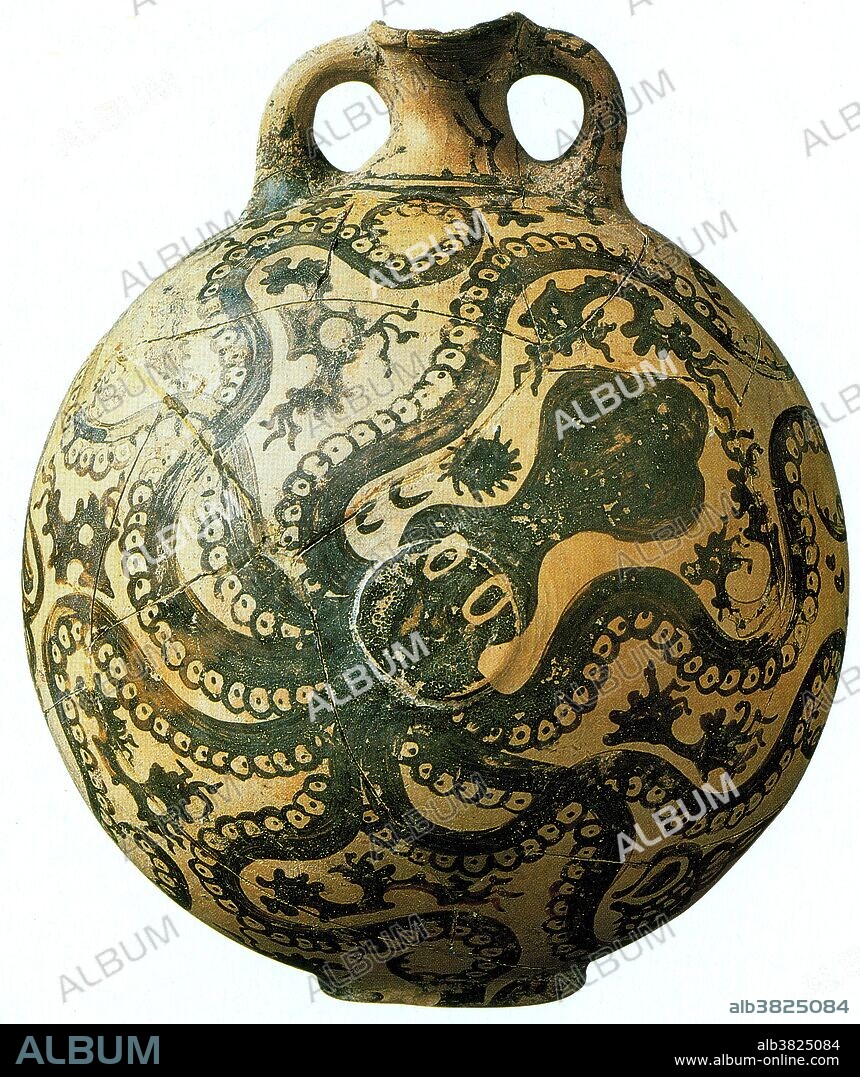alb3825084
Octopus, Minoan Clay Vase, 1500 BC

|
Add to another lightbox |
|
Add to another lightbox |



Title:
Octopus, Minoan Clay Vase, 1500 BC
Caption:
The sea was a recurring theme in the art of Minoan Crete, reflecting the important role that it played in everyday lives of the people. Octopus motifs, such as the one shown ere often used to decorate vases. An octopus is a cephalopod mollusk of the order Octopoda. It has two eyes and four pairs of arms and, like other cephalopods, it is bilaterally symmetric. An octopus has a hard beak, with its mouth at the center point of the arms. An octopus has no internal or external skeleton (although some species have a vestigial remnant of a shell inside their mantles), allowing it to squeeze through tight places. Octopuses are among the most intelligent and behaviorally flexible of all invertebrates. Octopuses inhabit many diverse regions of the ocean, including coral reefs, pelagic waters, and the ocean floor. They have numerous strategies for defending themselves against predators, including the expulsion of ink, the use of camouflage and deimatic displays, their ability to jet quickly through the water, and their ability to hide. An octopus trails its eight arms behind it as it swims. All octopuses are venomous, but only one group, the blue-ringed octopus, is known to be deadly to humans.
Credit:
Album / NYPL/Science Source
Releases:
Model: No - Property: No
Rights questions?
Rights questions?
Image size:
3274 x 3900 px | 36.5 MB
Print size:
27.7 x 33.0 cm | 10.9 x 13.0 in (300 dpi)
Keywords:
1500 BC • 1500 BCE • AEGEAN CIVILIZATION • ANCIENT CIVILIZATION • ANCIENT CRETE • ANCIENT CULTURE • ANCIENT GREECE • ANCIENT • ANIMAL • ANIMALIA • ANTIQUITY • AQUATIC LIFE • ART • ARTWORK • BRONZE AGE • CEPHALOPOD • CEPHALOPODA • CRETE • CUTTLEFISH • HISTORIC • HISTORICAL • HISTORY • INVERTEBRATE • MALACOLOGY • MARINE LIFE • MINOA • MINOAN CIVILIZATION • MINOAN • MOLLUSC • MOLLUSCA • MOLLUSCS • MOLLUSK • MOLLUSKS • OCEAN LIFE • OCTOPODA • OCTOPODIFORMES • OCTOPUS • PERIOD: BRONZE AGE • POTTERY • SCIENCE • SEA LIFE • TEUTHOLOGY • VASE • ZOOLOGICAL • ZOOLOGY
 Pinterest
Pinterest Twitter
Twitter Facebook
Facebook Copy link
Copy link Email
Email

